RARE! WWII Operation Watchtower Battle of Guadalcanal Combat Patrol Navigation Map
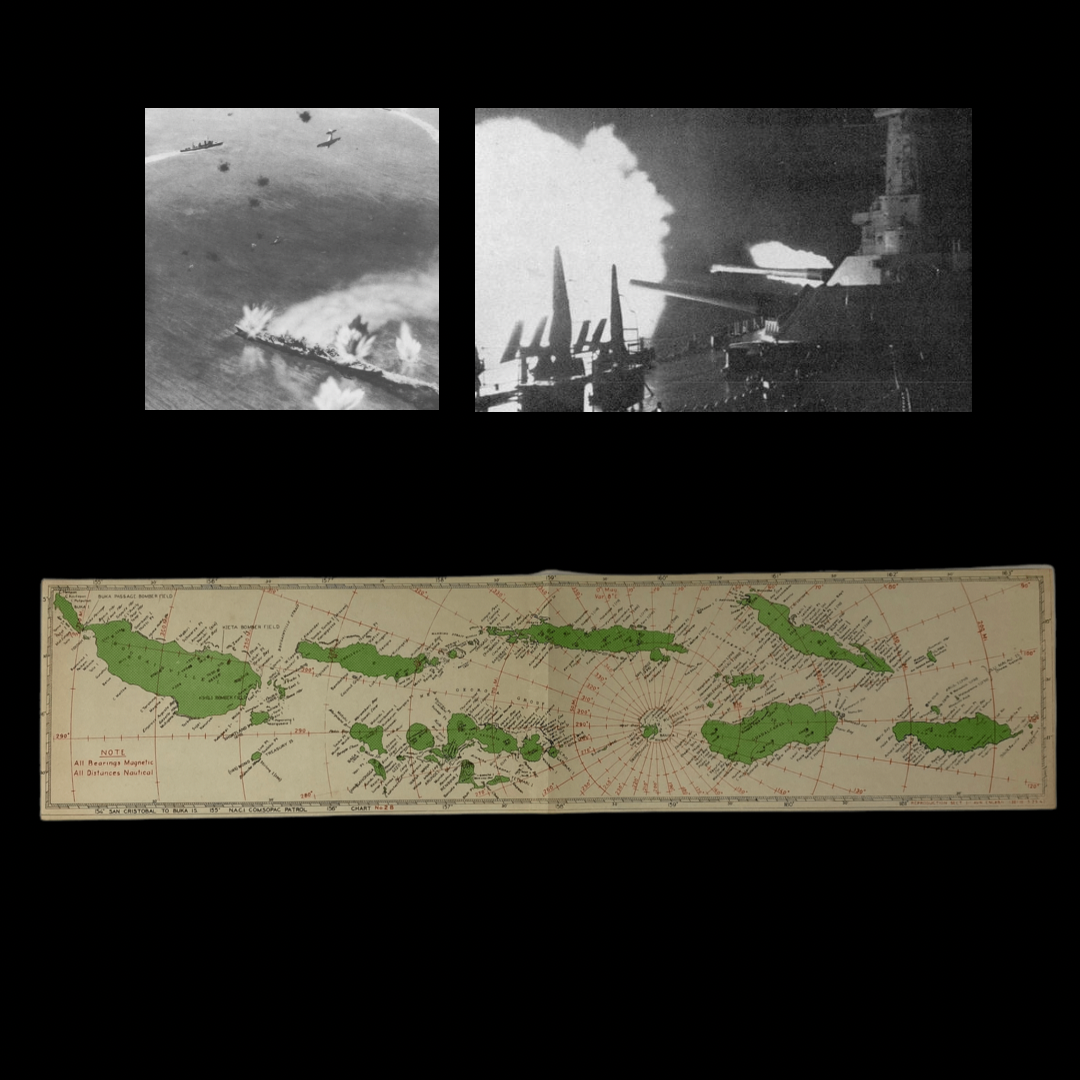

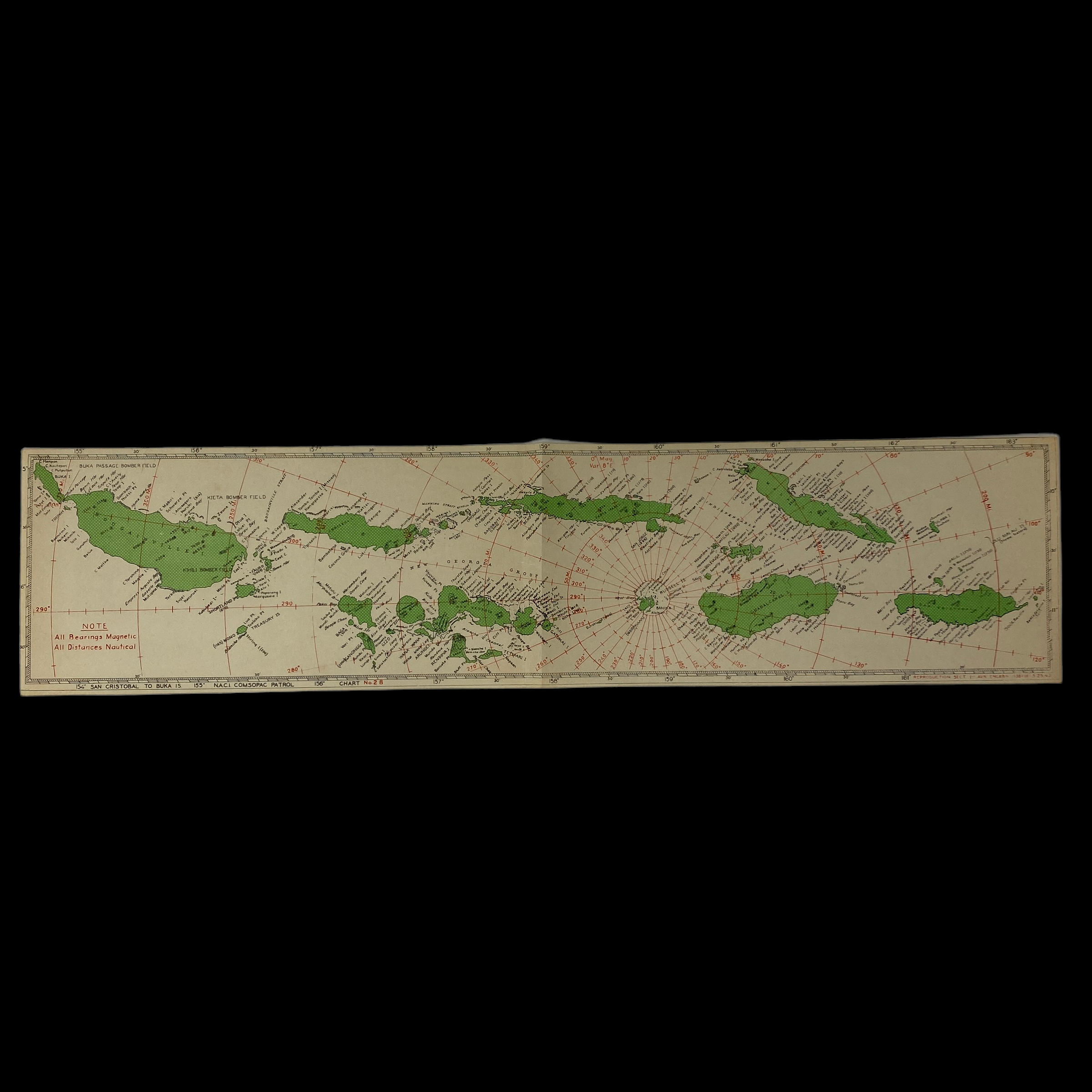





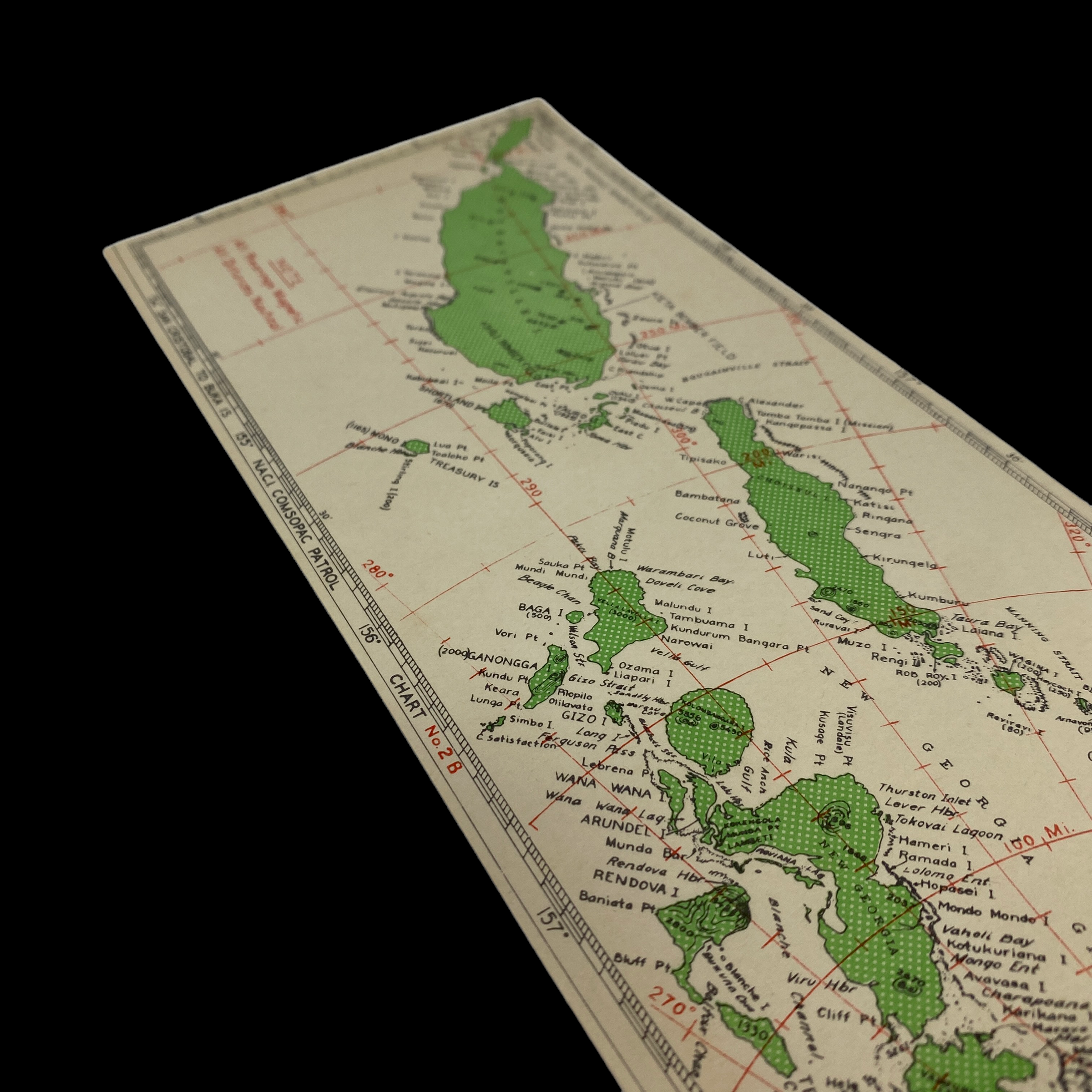

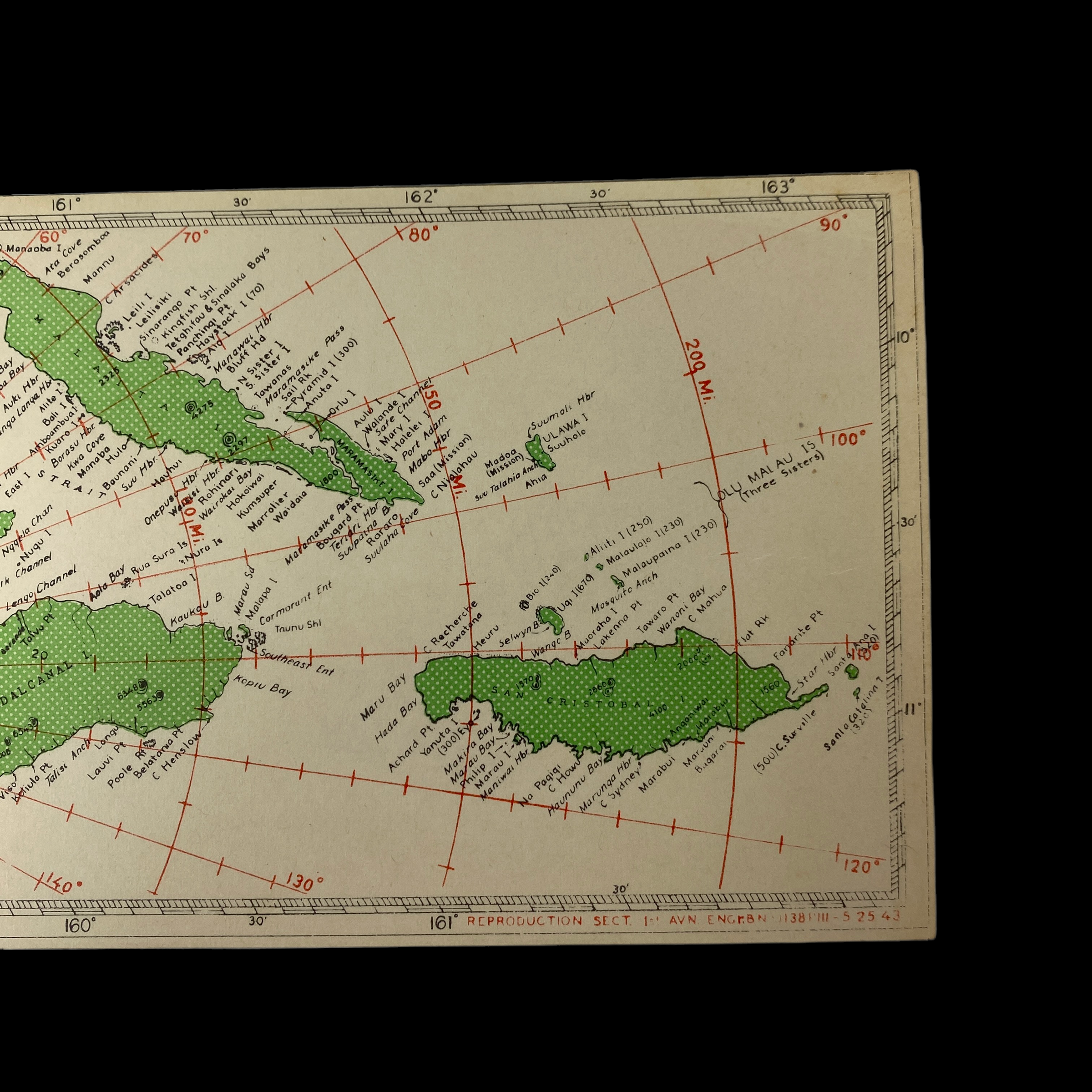



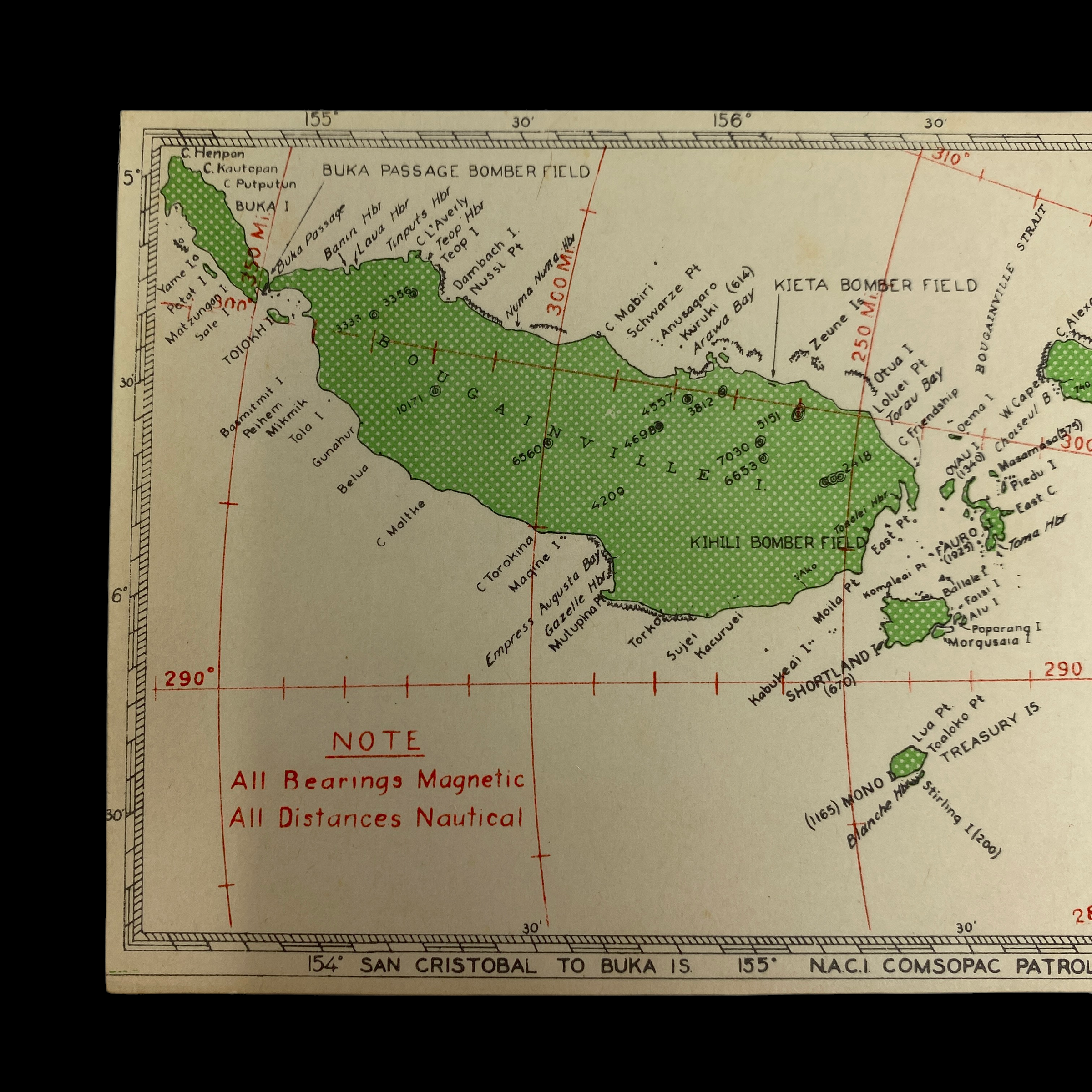



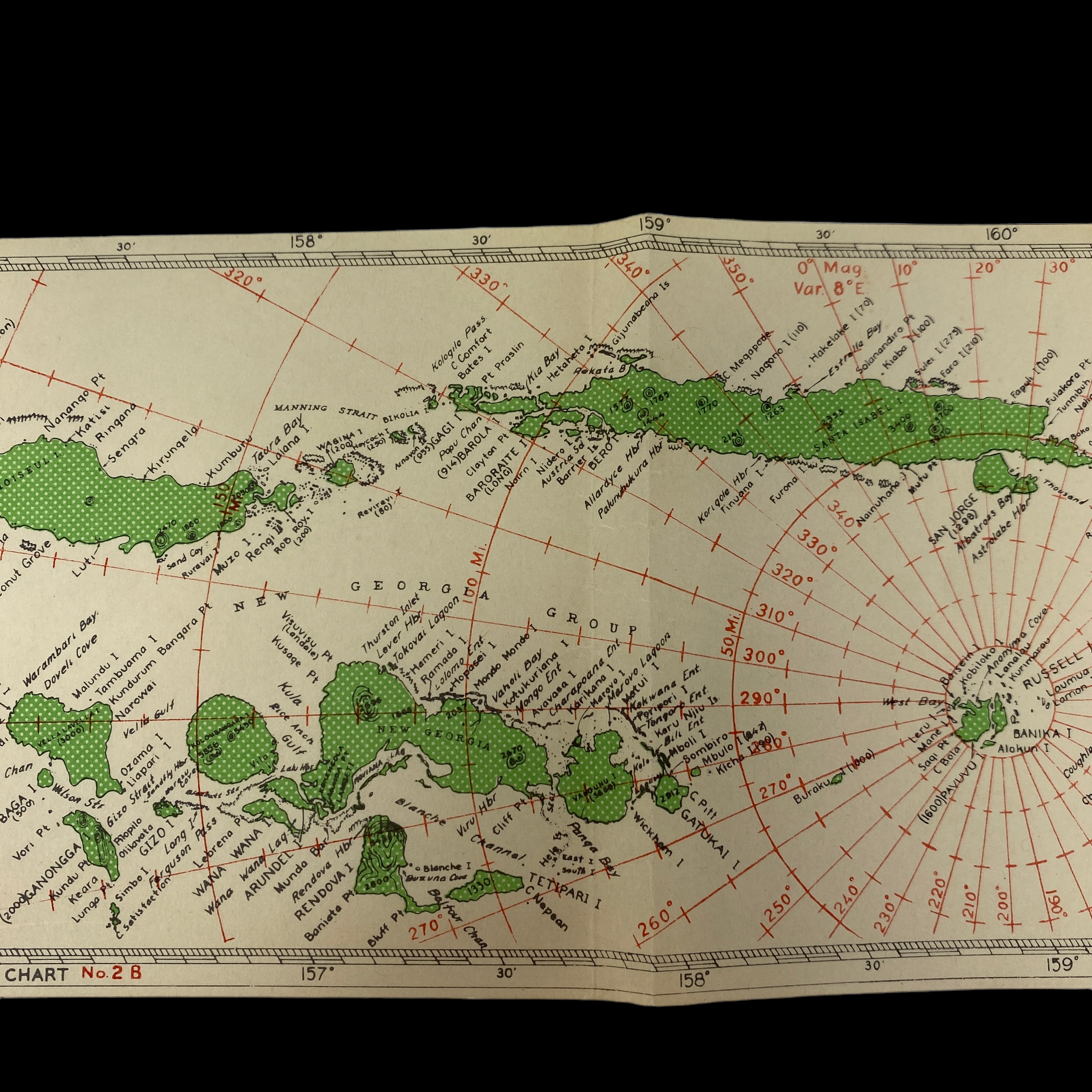
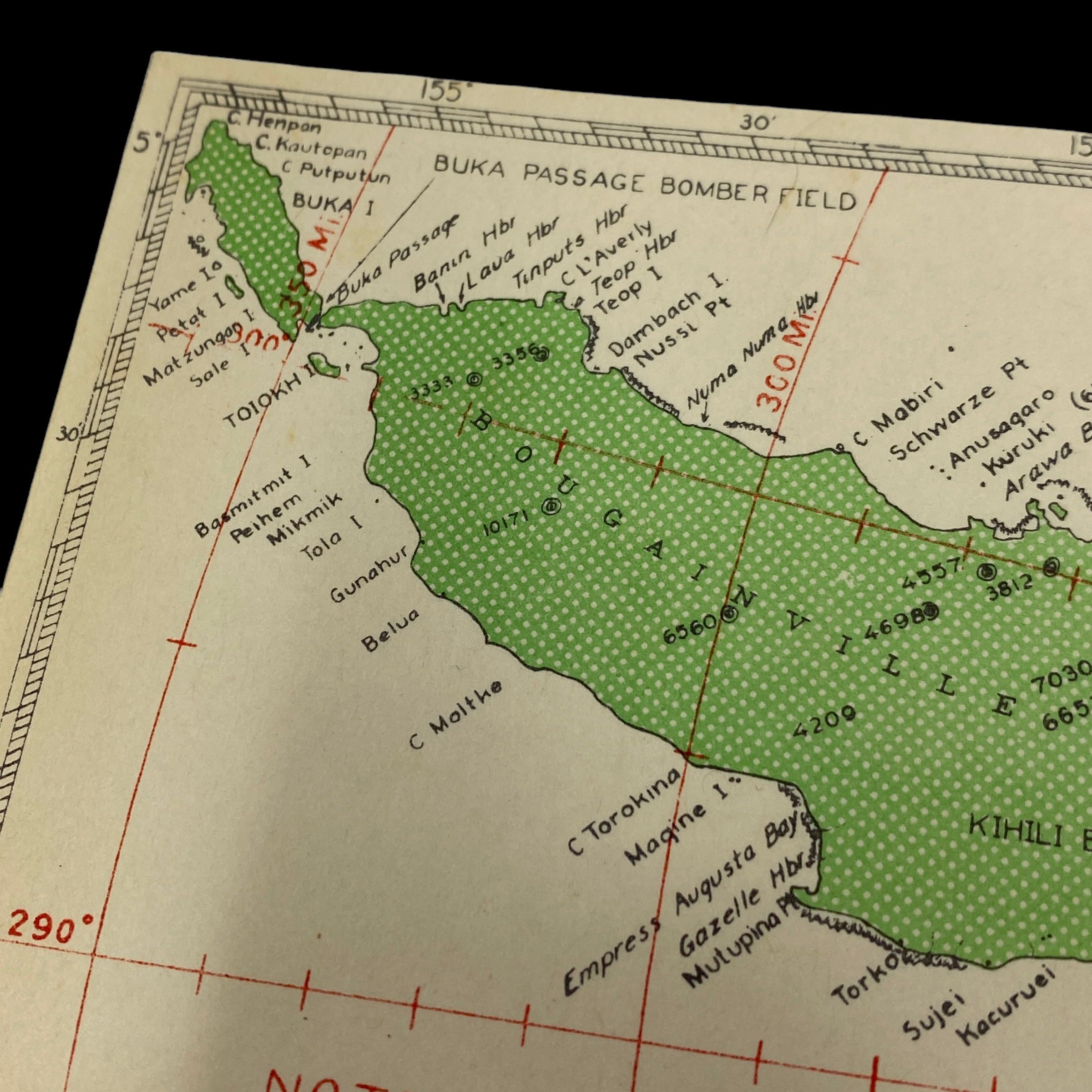
RARE! WWII Operation Watchtower Battle of Guadalcanal Combat Patrol Navigation Map
Comes with C.O.A.
This incredible rare panoramic type navigation map was used during Operation Watchtower and the Battle of Guadalcanal. This U.S. patrol map was specially made for operations during the Solomon Islands campaign. This combat operations chart was meant to be carried used for navigation on patrols or target-specific missions. This map notes Japanese bomber fields such as HENDERSON BOMBER FIELD, BUKA PASSAGE BOMBER FIELD, AND KIETA BOMBER FIELD.
The Guadalcanal campaign, also known as the Battle of Guadalcanal and codenamed Operation Watchtower by American forces, was a military campaign fought between 7 August 1942 and 9 February 1943 on and around the island of Guadalcanal in the Pacific theater of World War II. It was the first major land offensive by Allied forces against the Empire of Japan.
On 7 August 1942, Allied forces, predominantly United States Marines, landed on Guadalcanal, Tulagi, and Florida in the southern Solomon Islands, with the objective of using Guadalcanal and Tulagi as bases in supporting a campaign to eventually capture or neutralize the major Japanese base at Rabaul on New Britain. The Japanese defenders, who had occupied those islands since May 1942, were outnumbered and overwhelmed by the Allies, who captured Tulagi and Florida, as well as the airfield – later named Henderson Field – that was under construction on Guadalcanal.
The campaign followed the successful Allied defensive actions at the Battle of the Coral Sea and the Battle of Midway in May and June, 1942. Along with the battles at Milne Bay and Buna–Gona, the Guadalcanal campaign marked the Allies' transition from defensive operations to offensive ones and effectively allowed them to seize the strategic initiative in the Pacific theater from the Japanese. The campaign was followed by other Allied offensives in the Pacific, most notably: the Solomon Islands campaign, New Guinea campaign, the Gilbert and Marshall Islands campaign, the Mariana and Palau Islands campaign, the Philippines campaign (1944–1945), and the Volcano and Ryukyu Islands campaign prior to the surrender of Japan in August, 1945.
Naval Battle of Guadalcanal:
The climax of sea fighting in the Solomons came in the Naval Battle of Guadalcanal (November 12–15, 1942). On November 11–12, the U.S. landed a sizable contingent of reinforcements and supplies on the island. At roughly the same time, a fleet of Japanese transports, carrying some 7,000 men, steamed southward from Rabaul behind an escort of several battleships and a large screen of cruisers and destroyers. When the Americans detected this force descending on their vulnerable transports and cargo vessels, they dispatched a force of cruisers and destroyers to fight a delaying action. The result was a series of violent confrontations that inflicted heavy losses on both sides, but left the United States in a position of strength in the southern Solomons.
Just after midnight on November 13, the U.S. task force, under the command of Rear Adm. Daniel Callaghan, engaged Japanese ships commanded by Vice Adm. Abe Hiroaki. The battle that followed was a brutal 24-minute melee that saw capital ships on both sides blasting away at extremely close range. The Japanese lost the battleship Hiei while the U.S. lost the cruisers USS Atlanta and USS Juneau as well as several destroyers. Callaghan and Rear Adm. Norman Scott were killed in the engagement; they were the only two flag officers of the U.S. Navy to be killed in a surface engagement in World War II.
On November 14 Japanese cruisers and destroyers shelled Henderson Field, and another invasion force was discovered north of Guadalcanal. The Japanese ships were subjected to air attacks throughout the day, and that night they were engaged by the battleships USS Washington and USS South Dakota. About midnight, contact was made north of Savo Island, and another fierce night action ensued. The Japanese lost the battleship Kirishima and the heavy cruiser Kinugasa, and the U.S. lost three more destroyers.